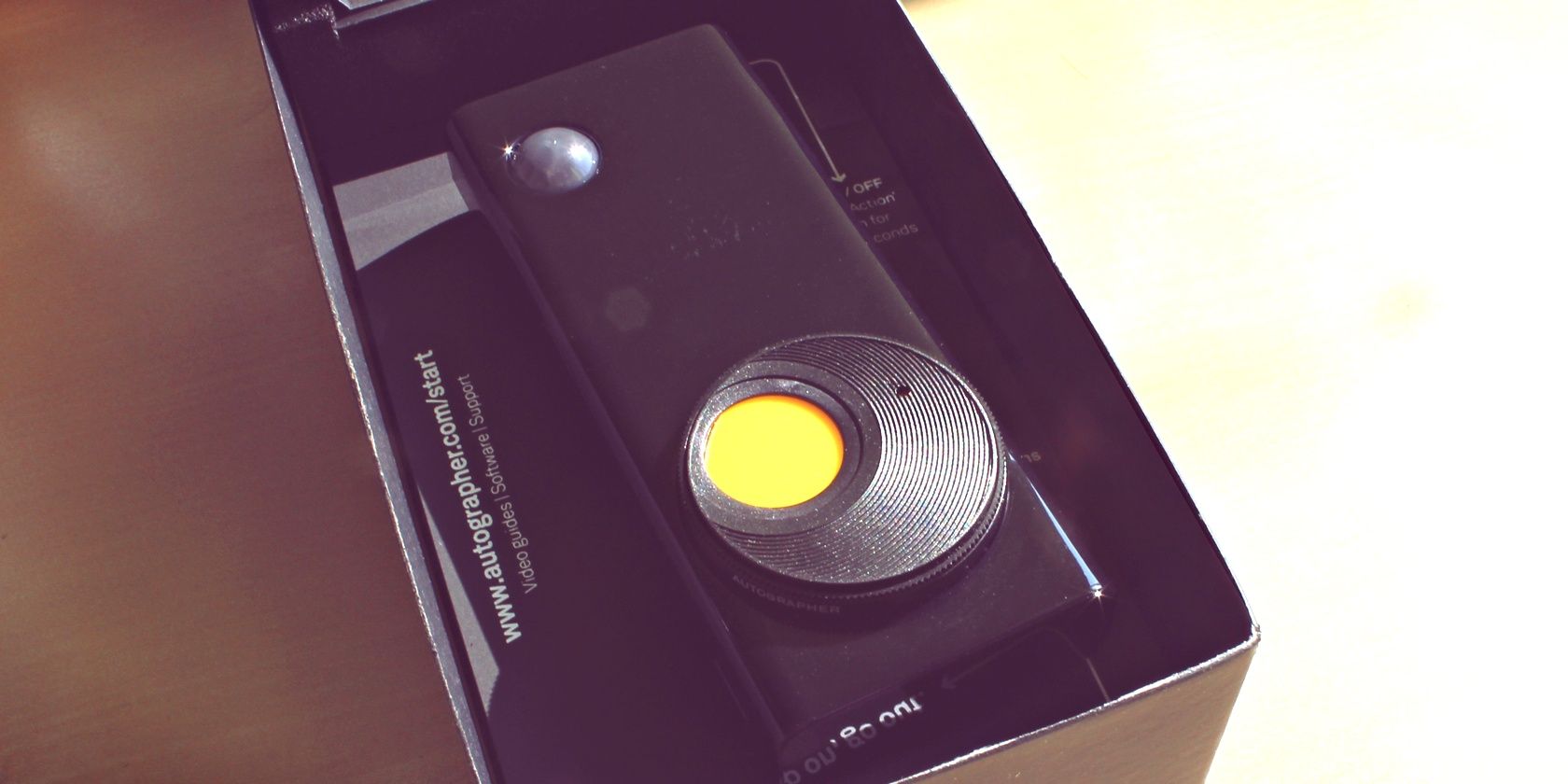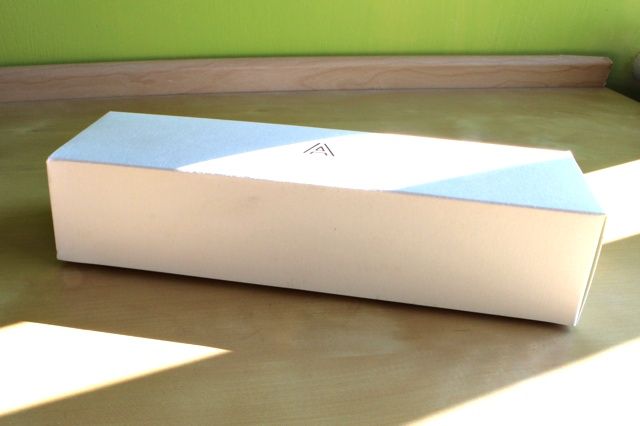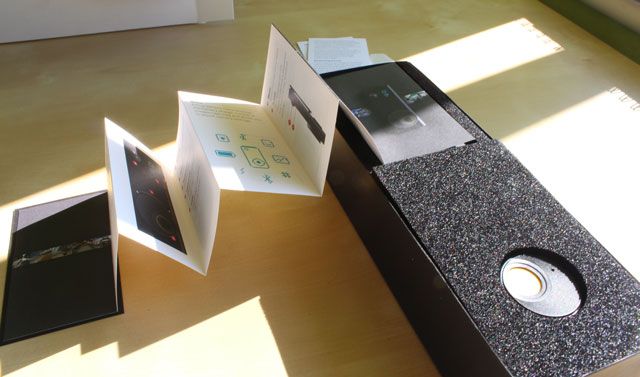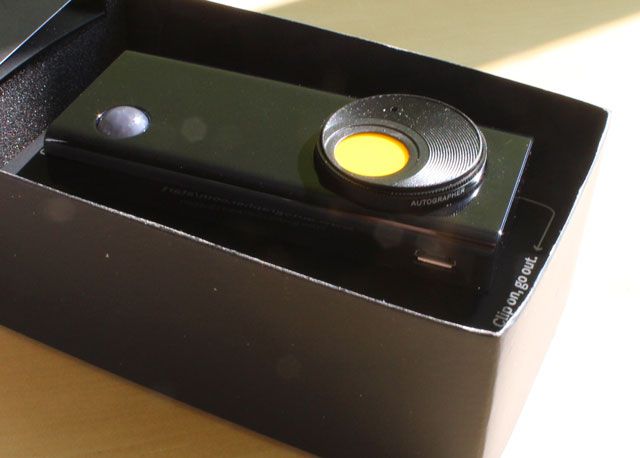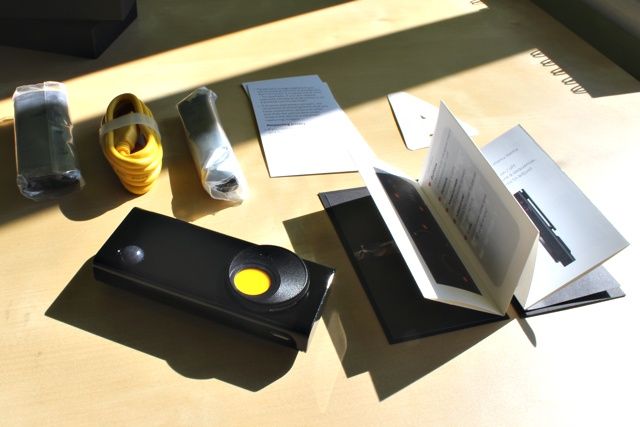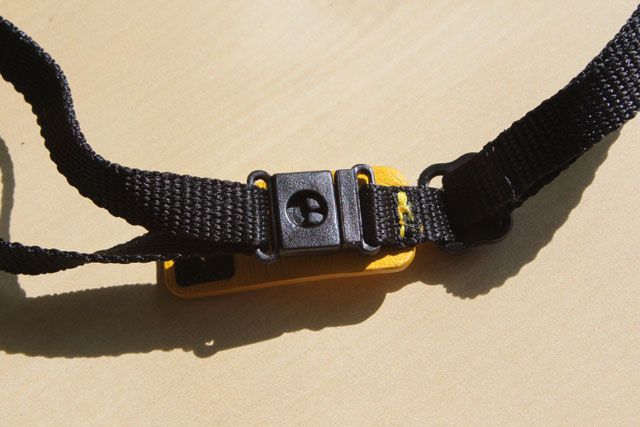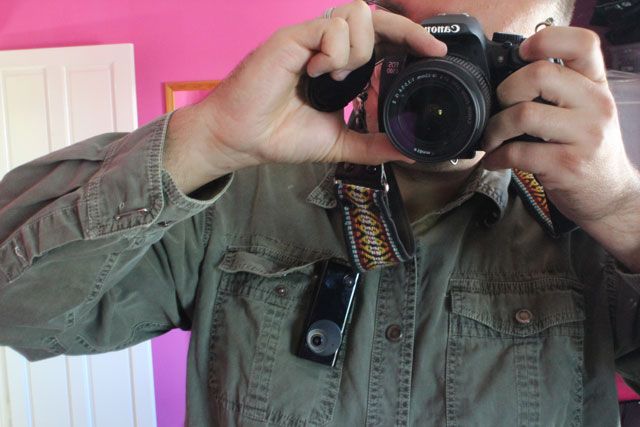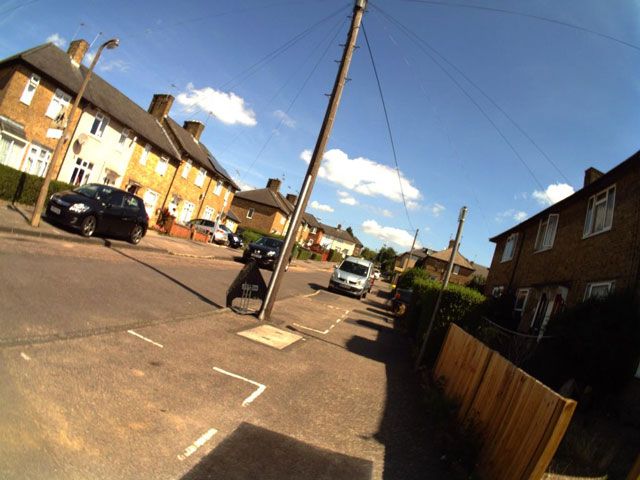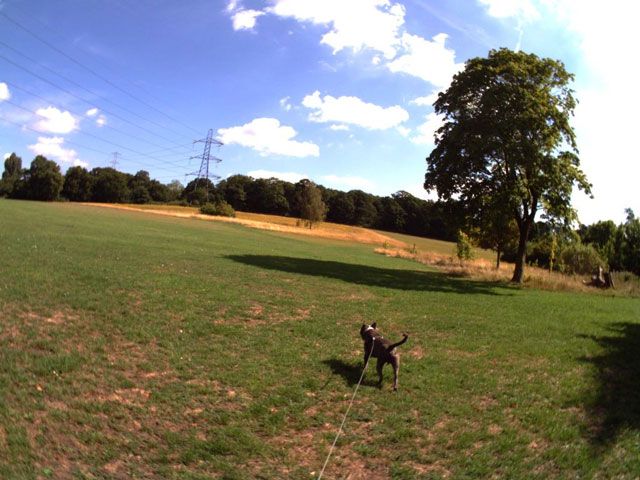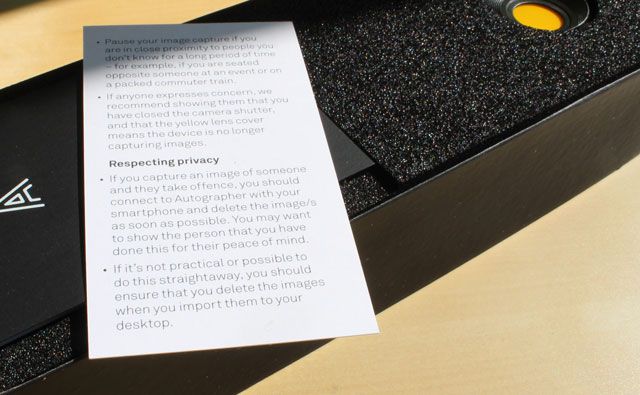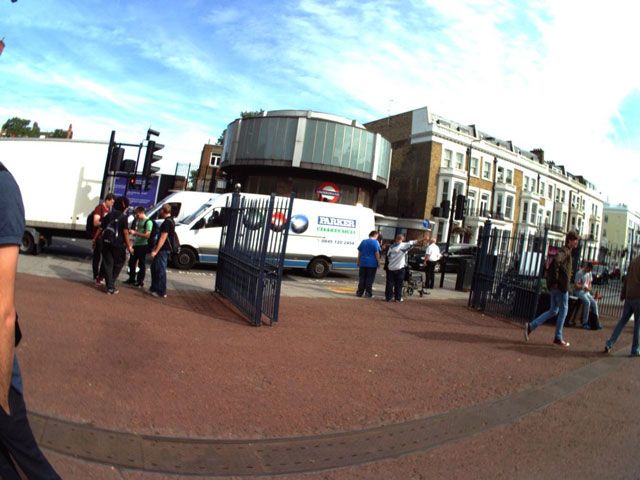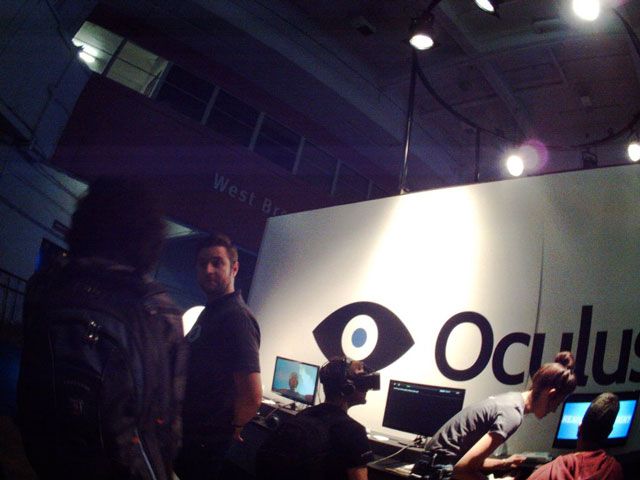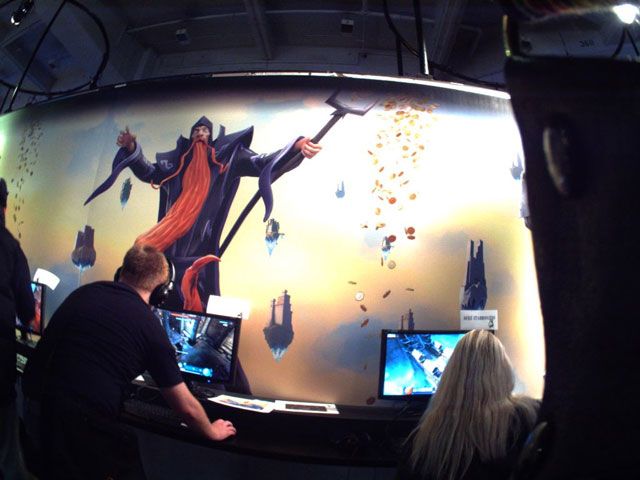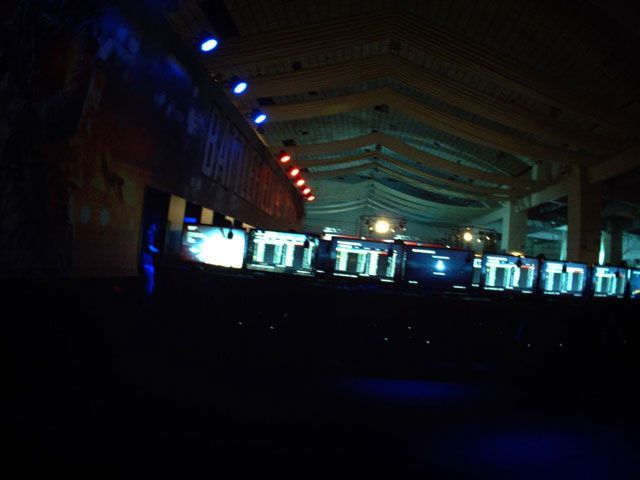Autographer
"The world's first intelligent wearable camera" is a bold claim indeed. "Automatic, but quite bad photography" is probably more apt. In essence, Autographer is a wearable life-logging camera, but the addition of a sensor array and algorithm takes it to a higher level. Is this something we should make room for in our lives, or just another expensive gadget for the hipsters?
Developed by OMG Life, the Autographer is currently only available in Europe for £399 (over US$600), though of course we'll be forwarding this one to the winner wherever they are in the world. Memoto is the closest competitor at just under $300 - a lot cheaper, but still on pre-order.
Update: priced reduced to £299. Will be available in the US for $399.
http://www.youtube.com/watch?v=ppsr0B-YhPI
Specifications
- 136° lens
- Temperature sensor
- Infra-red motion sensor
- GPS
- Magnetometer
- Accelerometer
- Colour sensor
- 8 GB non-expandable internal memory (enough for around 27,000 photos)
- 10-hour battery life on medium capture frequency
Initial Impressions
With the Apple-esque white outer box removed, the product packaging is a smart translucent black, a white outline of the product just hinting at what's inside.
Inside, everything is neatly packed in black foam. However, despite the luxury appearance of the packaging, the Autographer itself can only be described as tacky.
Lightweight and feeling wholly insubstantial, the device is entirely plastic, and not even the nice rubberised matte-black kind that resists fingerprints; no, this is the shiny, cheap black plastic you'd expect on a sub-$50 smartphone.
In the box, you'll find:
- Autographer
- Neck strap
- Case
- Yellow USB cable
- Instruction booklet
- Sticker and privacy card
A yellow cover indicates the shutter is closed, but it feels like this feature was tacked on at the last minute to alleviate privacy concerns. The lens cover twists round to open it.
Supplied with an adjustable strap for hanging around your neck, the plastic clasp is just too weak - a light tug on the camera opens it right up. It seems they tried to address this with the faux leather label that goes over the clasp, one end of which has some velcro which should, in theory, attach to the thread of the strap. But it doesn't, not at all.
I opted to use the clip for a shirt pocket instead; you really will need to buy a new strap if you don't wear shirts all the time.
A small blue OLED screen is used for adjusting the device settings; it's only barely visible in bright sunlight, but otherwise easy to navigate despite only two buttons for adjustments.
Setup and Pairing
Hold down the Action button (the lower of two) to turn on the device. There are only two buttons; once turned on, pressing the Action button will start a sequence of images, pressing the Menu button will end the sequence - this is for moments when you especially want a scene captured and don't want to rely on the built-in algorithm. The Menu button cycles through the menu options. Immediately, I turned on Bluetooth and also what I thought was the quality up to high - it's set on medium by default. Turns out that setting was actually capture frequency, so that's best left on medium unless you want the images taken every minute or so.
Desktop software is provided, though there is no disk - it's stored inside a special folder on the device itself, which you can access by plugging in the USB cable, otherwise you may download it from their website. Mac and PC software is supplied, so I'll be taking a look at the Mac software later after actually taking some pictures.
Paring your iPhone or iPad is not required, but recommended for privacy concerns on the go; if someone requests that you delete their photo, you can do so immediately rather than having to promise you will do later. The app is simple enough, but I had to pair in the device settings of the phone, rather than doing so through the app itself - this could be a quirk of the iPhone 4 or iOS restrictions. No Android app is provided, but third parties may produce one in the future. Also, it's worth noting that Bluetooth turns itself off to preserve battery life, so you'll need to reactivate it every time you wish to access the device from your iPhone.
First Use
My first outing was taking the dog for a walk around my local parks - outdoors with good lighting. Subject matter aside, most of the shots came out alright, especially considering I was walking the entire time.
I did feel quite self-conscious initially, though this subsided after a few hours. The device is lightweight, but bulky enough to be noticeable. To most passers-by, I imagine it looks like a clam-shell phone, but as I passed the children's playgrounds I realised how the situation could easily be misinterpreted.
I've never felt so simultaneously like a secret agent and a paedophile. It's not illegal in the UK to take pictures in a public place, but I can see how most people would be apprehensive if they knew it was "secretly" snapping pictures every minute or so. The camera even comes with a card with tips on minimising issues when wearing the camera around other people; there are clearly legitimate privacy concerns here.
Battery Life
For a camera designed to be worn all day, you'd expect a good battery life - and Autographer thankfully delivers. Claiming 10 hours on medium setting, it can blow through a few thousand easily before requiring a recharge. The battery will run out well before the internal memory does, and since there's no way to view the images on the device itself, there's little reason to leave them on the device after syncing with the software.
Picture Quality
The photos really aren't that great considering the price is akin to a budget DSLR camera - they tend to be overexposed outside, and many are taken during motion which naturally results in a slight blur. They're about as good as you might get typically from a mobile phone, only with a fish eye lens to add interest.
Performance in low light situations is absolutely atrocious - at the Eurogamer Expo in London, photos were grainy at best, with 90% of the shots taken just being too dark or blurry to be in the slightest bit discernible. The ones below are from the 10% that weren't instantly trashed.
Software
The included software is easy to pick up and more than functional - there's a standard gallery view, a calendar view, and some meta information in the sidebar. The only unique aspect above and beyond something like iPhoto is the ability to play high speed time-lapse sequences from 1/4 to 12 frames per second.
It's easy to highlight a series of your favourite shots to export a .gif or video, including the ability to add your own background track.
http://www.youtube.com/watch?v=pZHHwMXq-z4
Should you buy the Autographer?
The Autographer strikes me as something that a celebrity of Justin Bieber proportions might find incredibly useful, especially if you could set it up to auto-tweet every single photo it takes. For the rest of us, I struggle to find a reason to take a photograph every minute of my life, particularly at a time when many find the notion of privacy to be ever more elusive.
Then again, just because the camera does capture a few hundred photos a day doesn't mean you can't trash most of them and keep only the best. The fish eye lens and the candid nature of automatic photography can lend itself to some pretty unique photos that you otherwise might have missed. Is it worth the £400 asking price though? Not a chance.
[recommend]Don't buy it unless you're as rich and famous as Justin Bieber.[/recommend]
The Winner
Congratulations, Kirstie Vaughan! You would have received an email from jackson@makeuseof.com. Please respond before November 14 to claim your prize. Enquires beyond this date will not be entertained.
Send your products to be reviewed. Contact Jackson Chung for further details.

